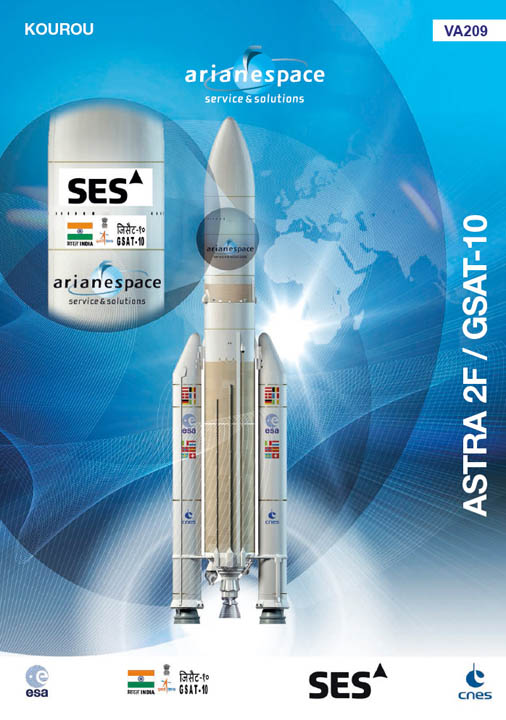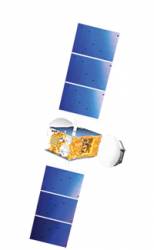 Ariane launch poster for ASTRA 2F and GSAT-10
Ariane launch poster for ASTRA 2F and GSAT-10Arianespace successfully launched India’s GSAT-10 satellite this evening (September 28, 2012) on board an Ariane 5 rocket from Europe’s Spaceport in Kourou, French Guiana.
The GSAT-10 carries India’s second GAGAN (GPS Aided GEO Augmented Navigation) payload, following a successful launch of the nation’s first space-based augmentation for GPS last year.
Arianespace successfully launched India’s GSAT-10 satellite this evening (September 28, 2012) on board an Ariane 5 rocket from Europe’s Spaceport in Kourou, French Guiana.
The GSAT-10 carries India’s second GAGAN (GPS Aided GEO Augmented Navigation) payload, following a successful launch of the nation’s first space-based augmentation for GPS last year.
GSAT-10, which was built by the Indian Space Research Organization (ISRO) using the agency’s I-3K satellite bus, has a liftoff mass of some 3,400 kilograms (7,480 pounds) and will be deployed from Ariane 5’s lower passenger position at approximately 30 minutes into the flight.
Equipped with 30 Ku- and C-band transponders and the GAGAN (GPS and GEO augmented navigation) payload, GSAT-10 is to join the Indian National Satellite (INSAT) system of geostationary spacecraft. Operating in the GPS L1 and L5 bands, the GSAT-10 is predicted to have a minimum operational life of 15 years.
With an orbital position of 83˚ East, GAGAN will be used primarily to provide increased accuracy and reliability of civil aviation navigation.ISRO’s satellite mission director in charge of the GSAT-10 is Tumkur Anuradha.
The launch took place at 6:18 p.m. local time in French Guiana (5:18 p.m. EDT). An ASTRA 2F telecommunications satellite was also on board the Ariane 5.





